

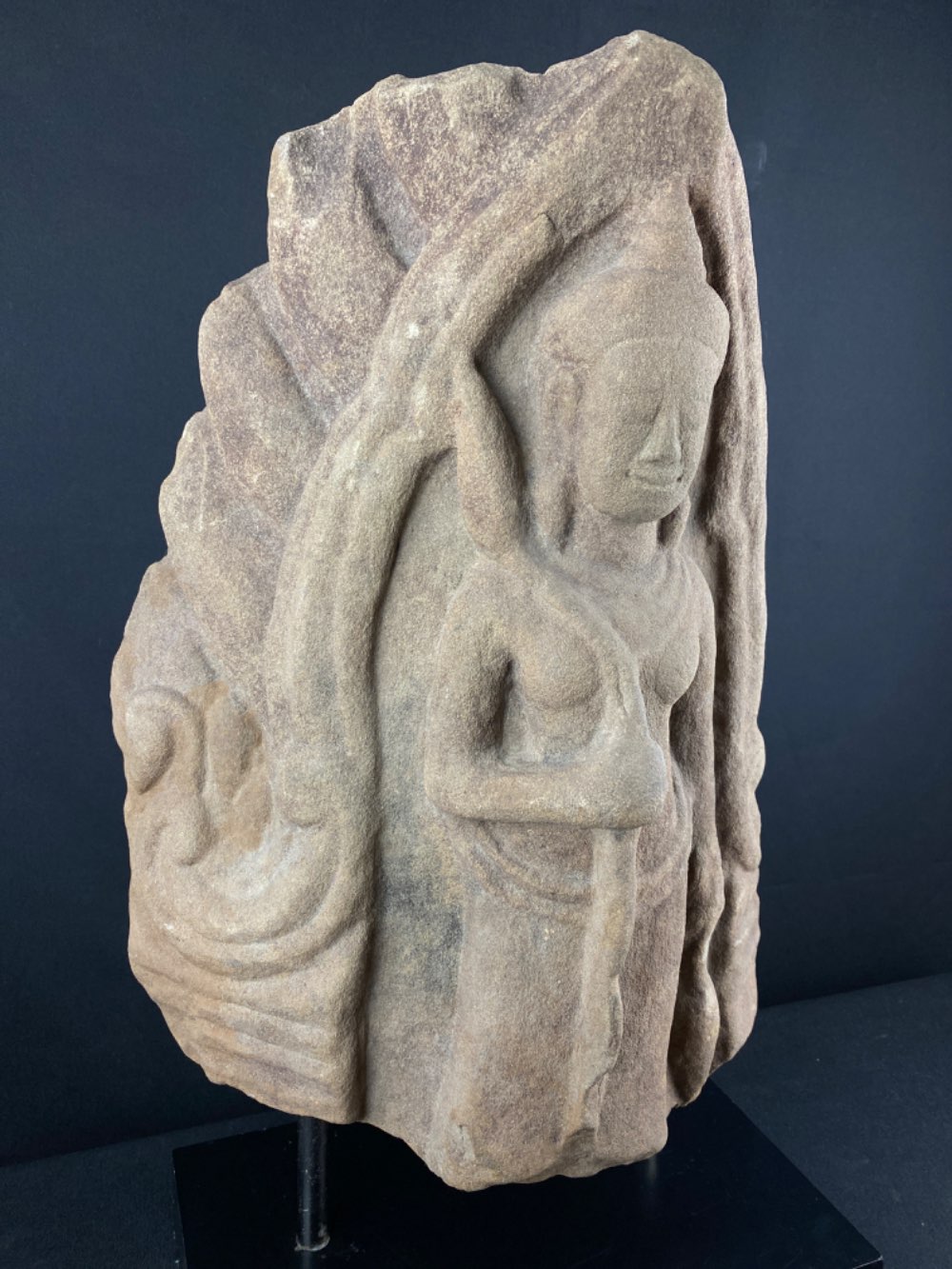
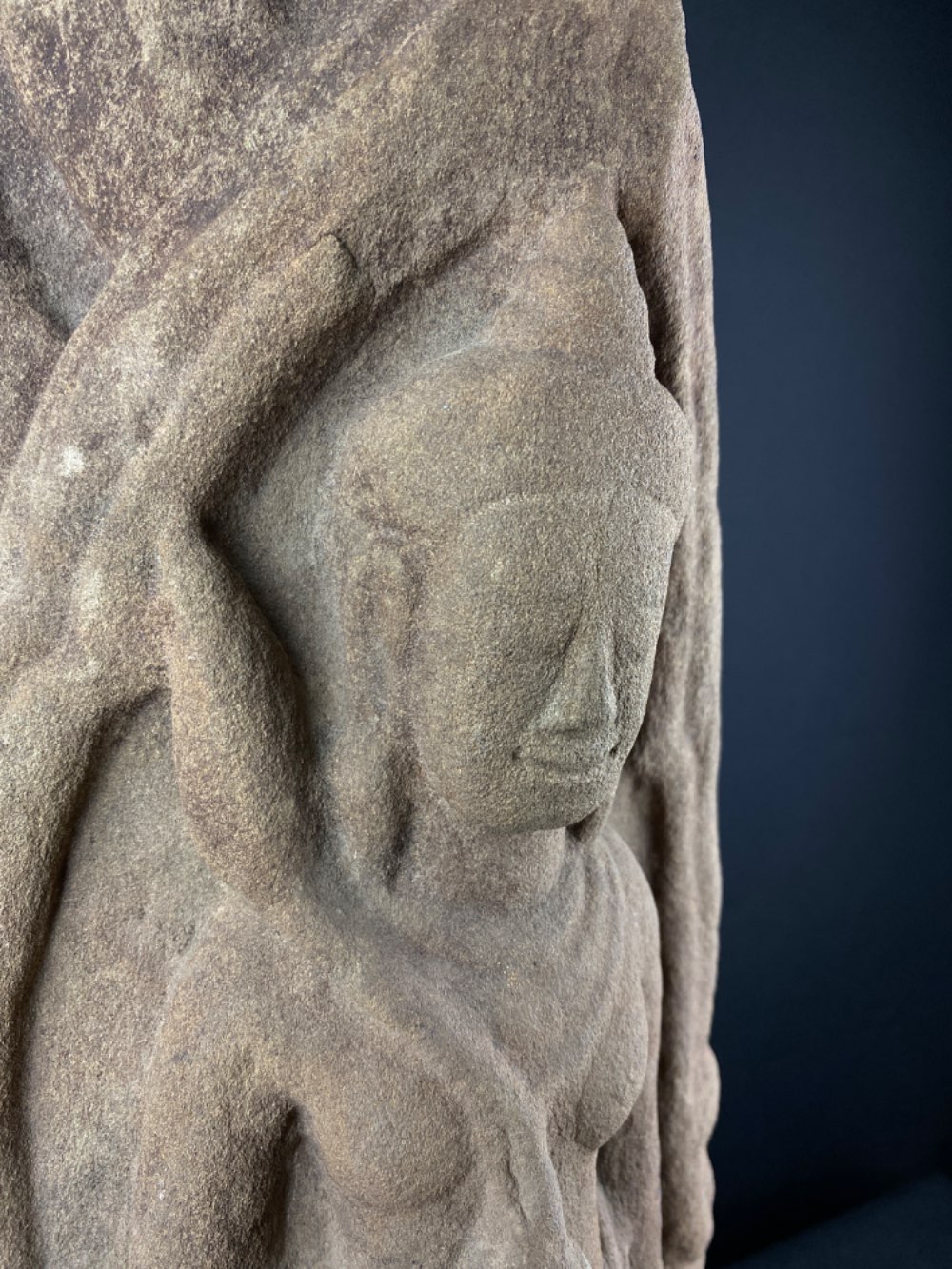
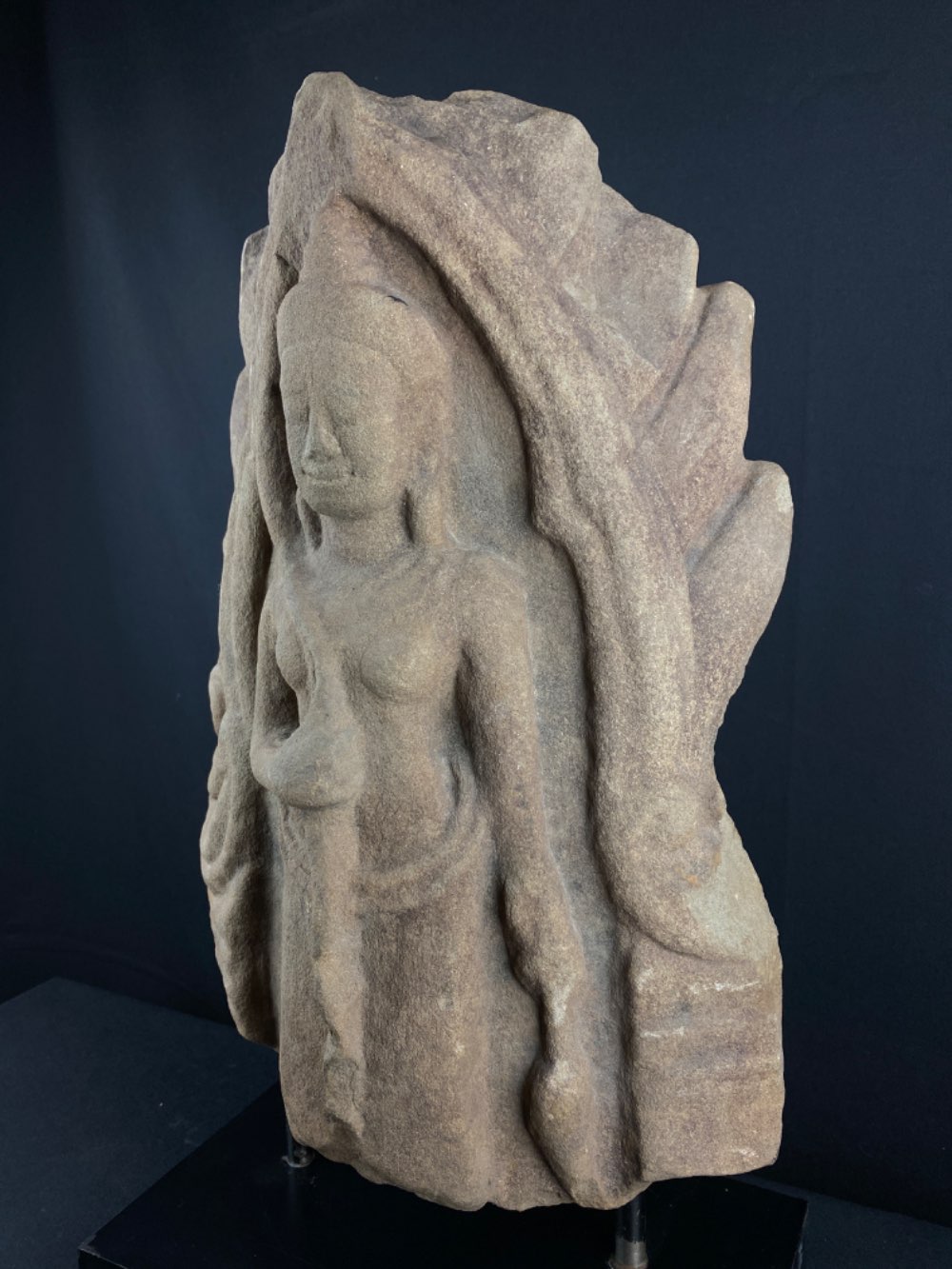
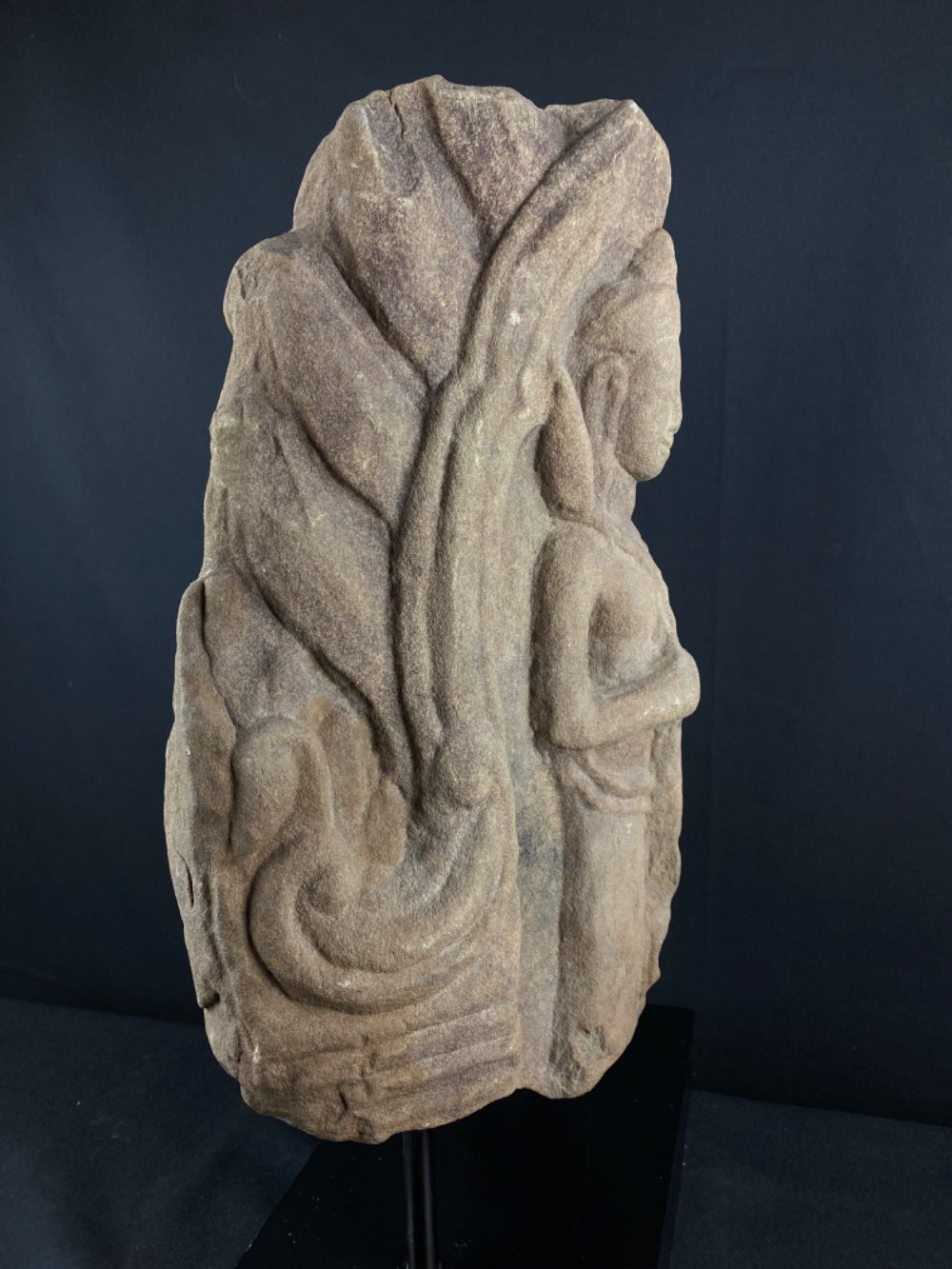
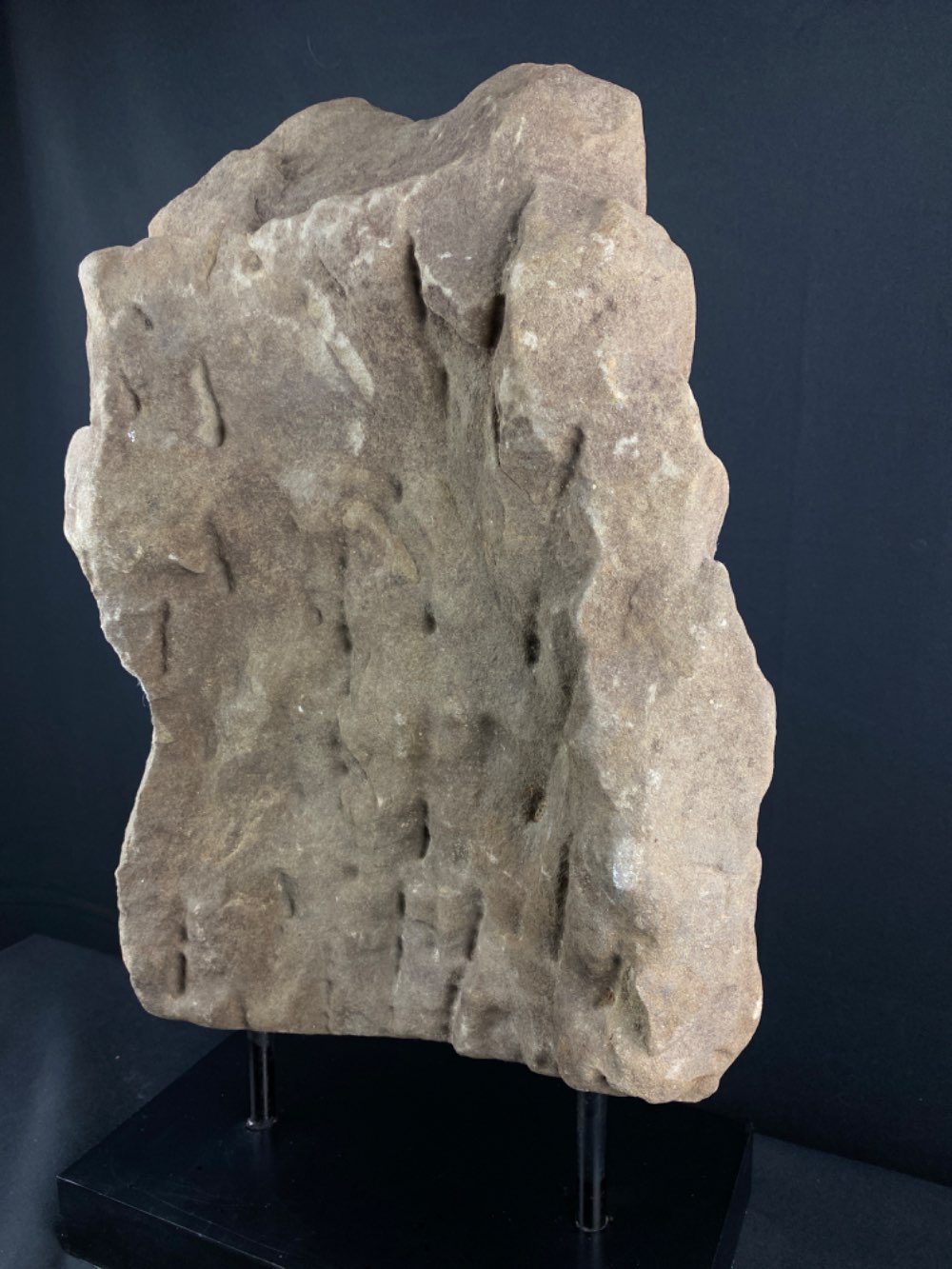
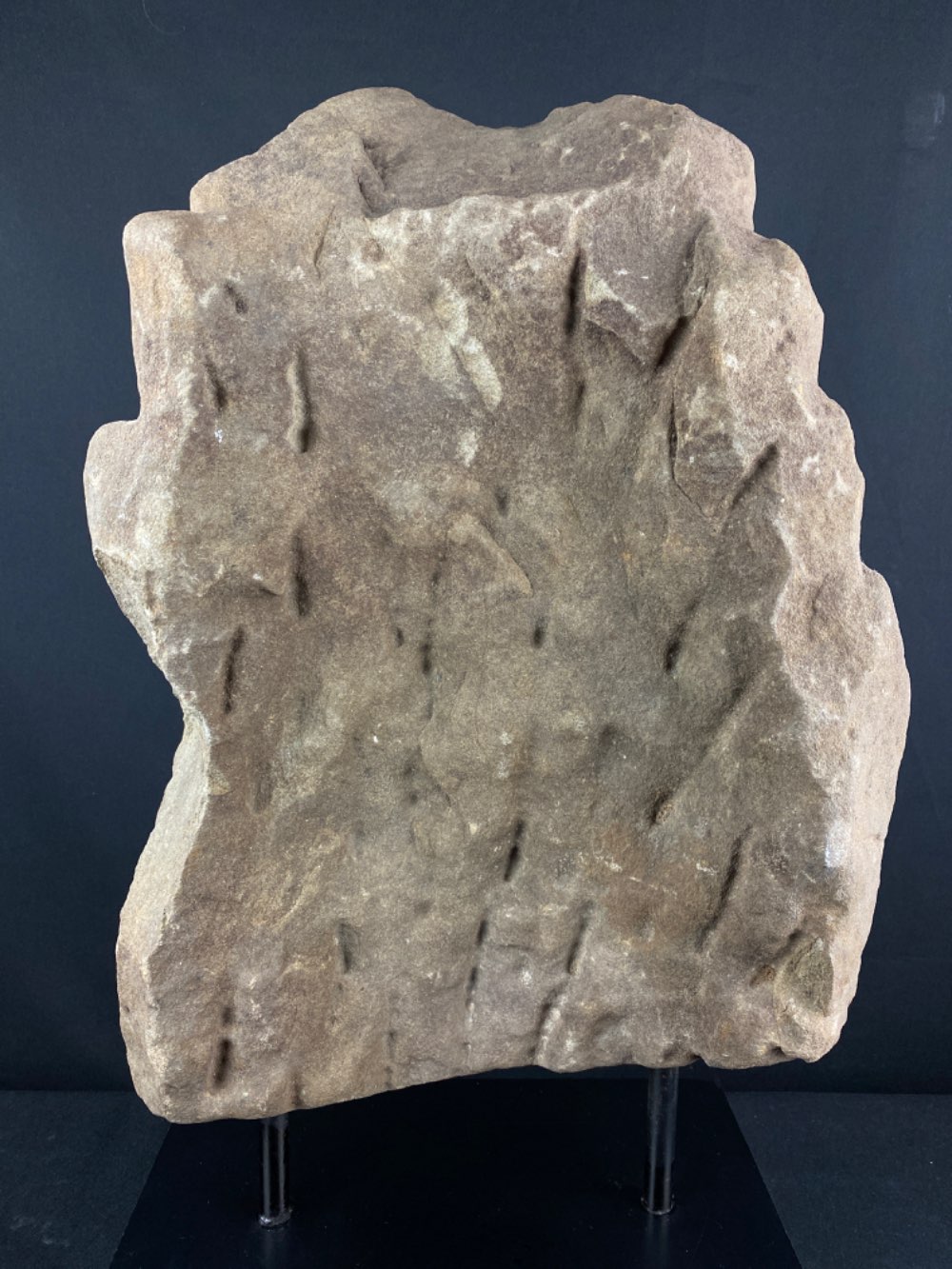
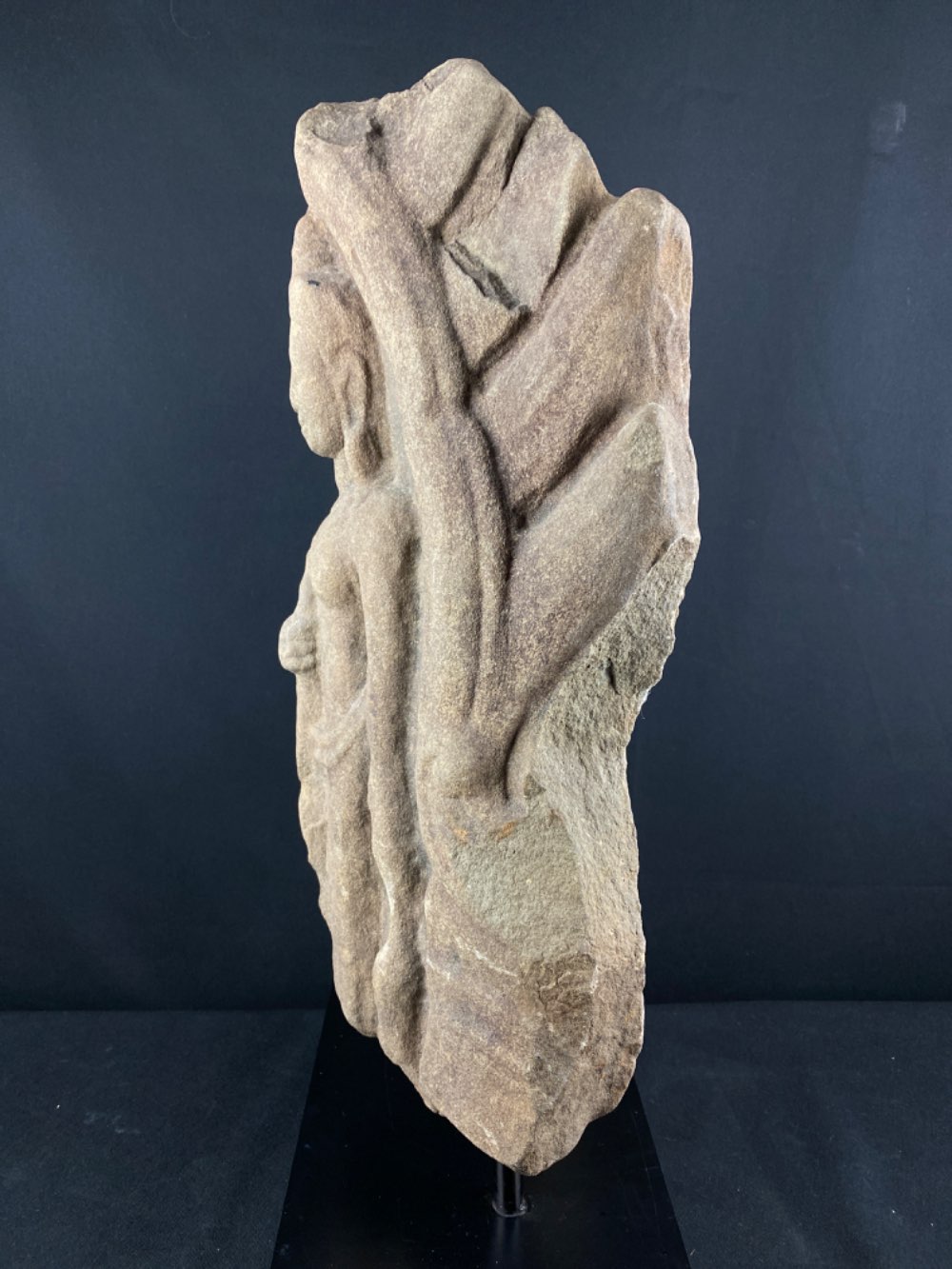
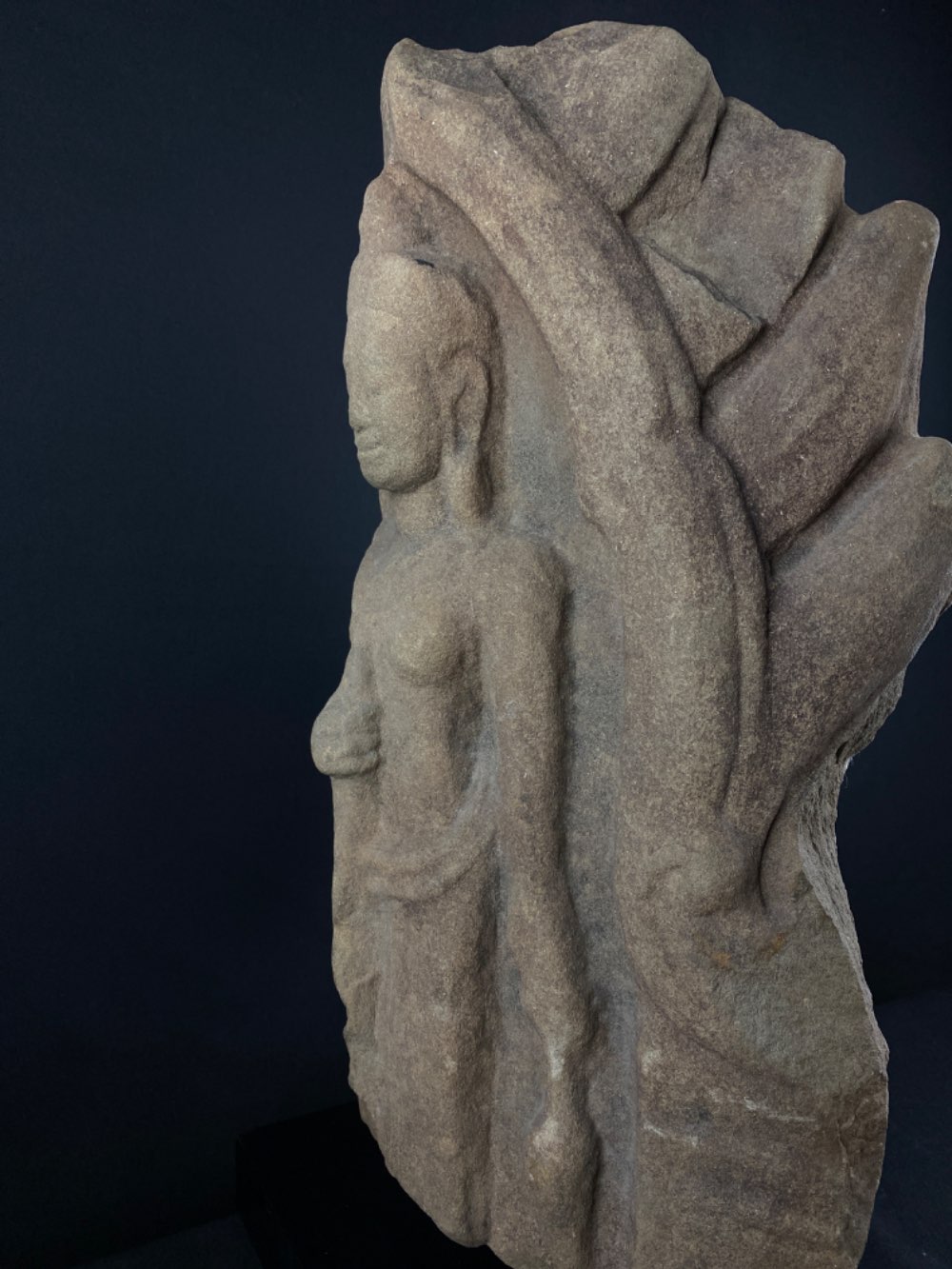
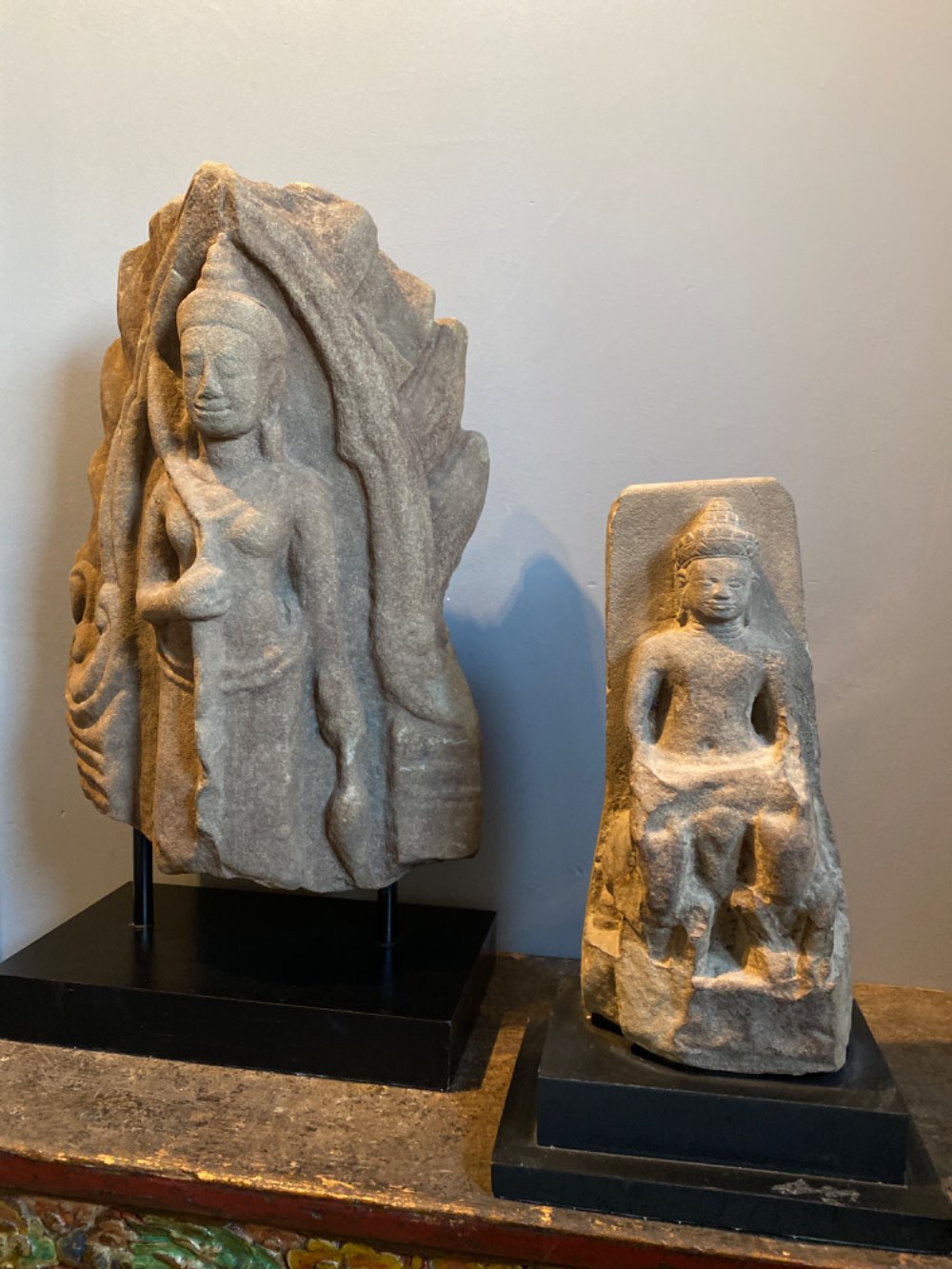
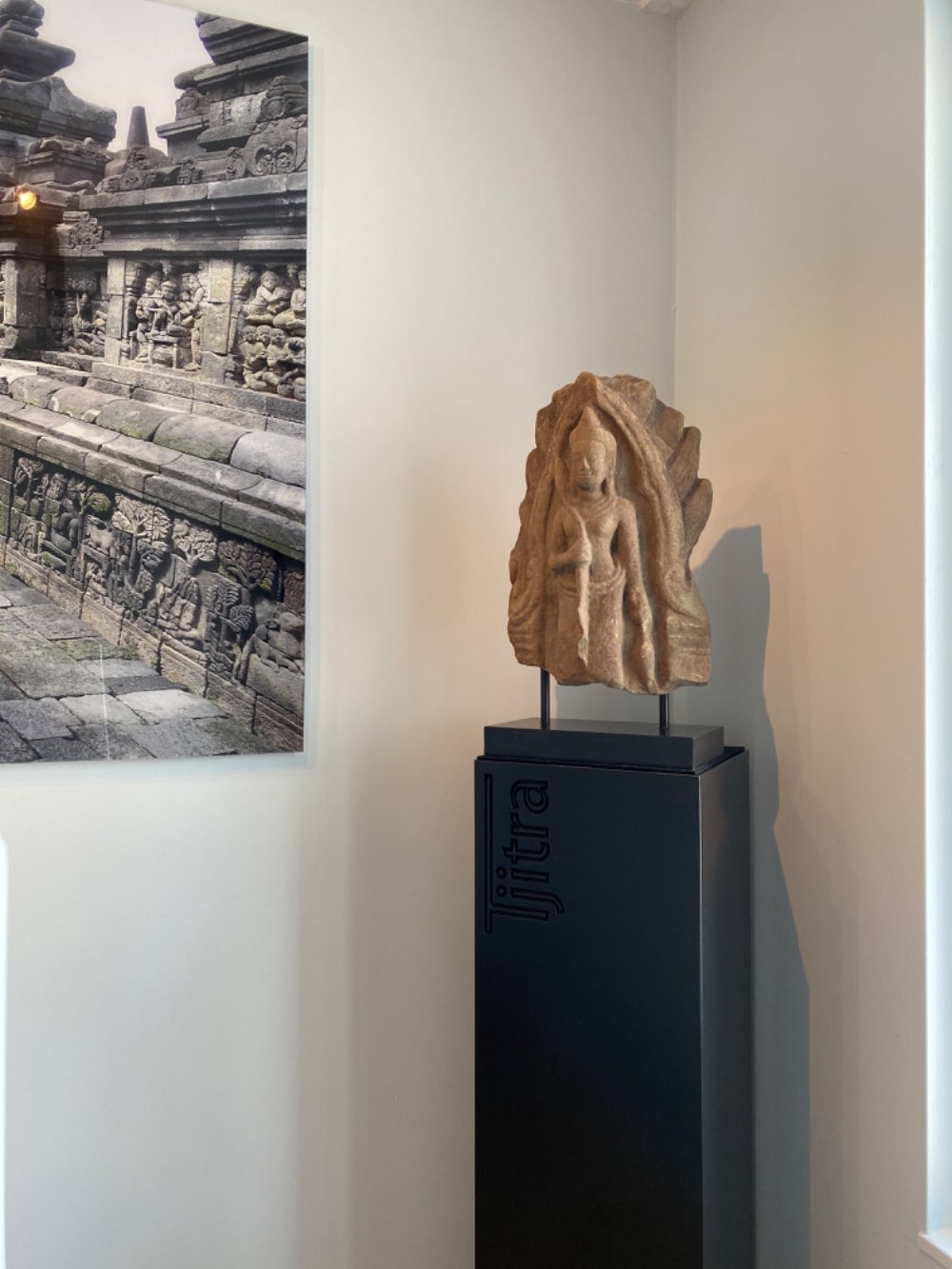
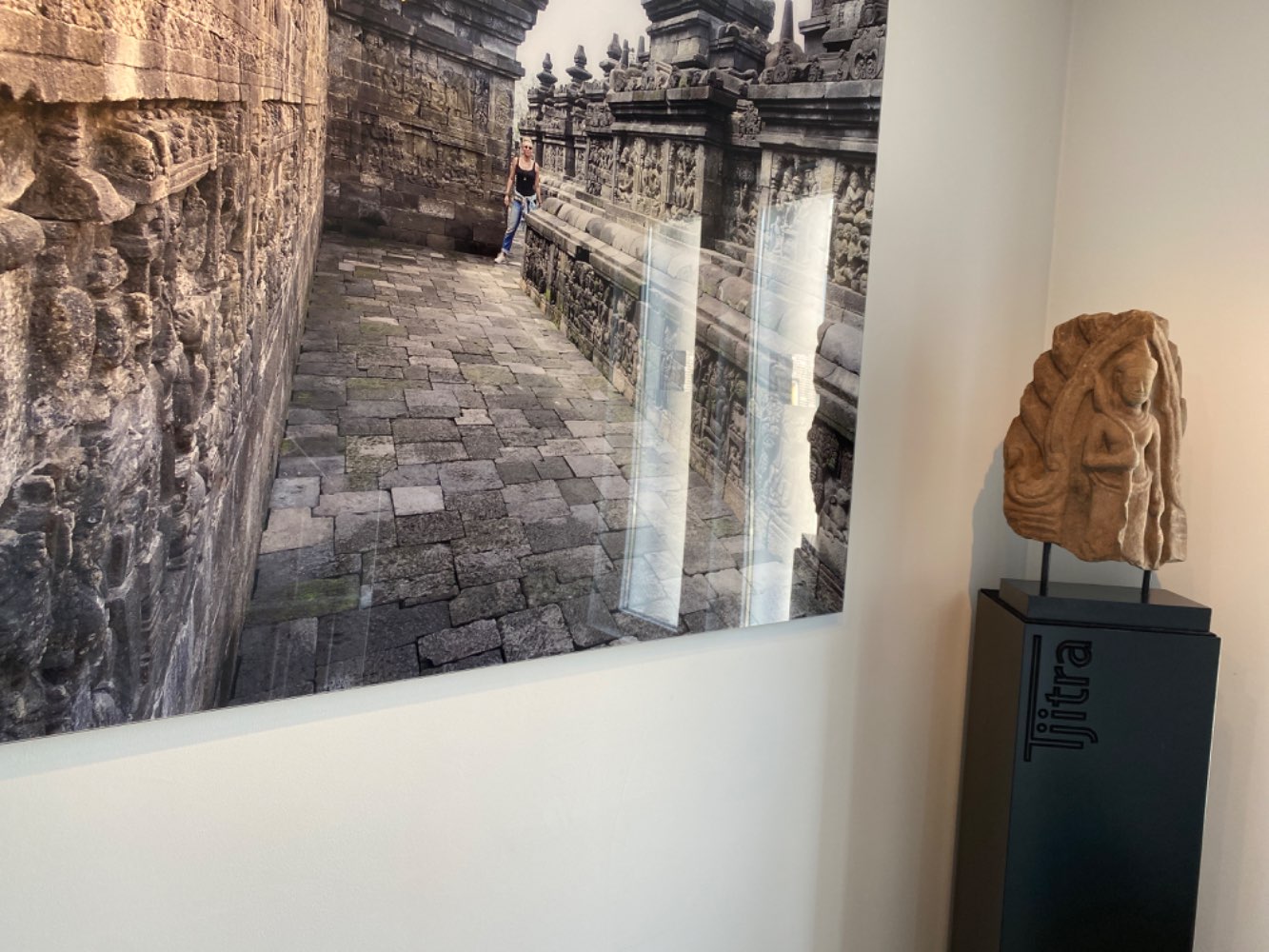
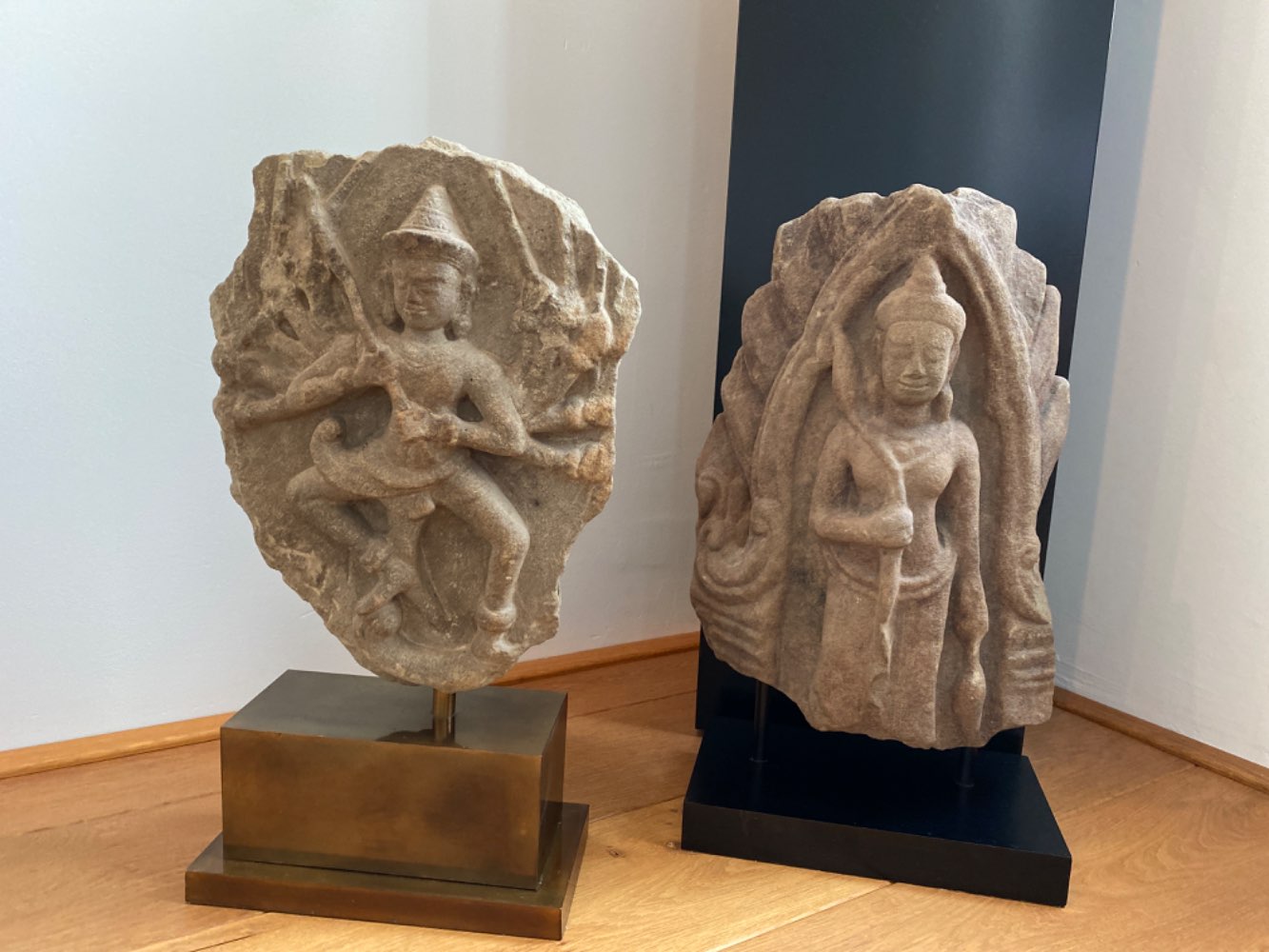

Very nice Sandstone fragment of an Apsara from Cambodia, 12-13th century
Very nice Sandstone fragment of an Apsara from Cambodia, 12-13th century
- Country: Cambodia, Khmer
- Period: 12-13th Century
- Material: Sandstone
- Size: 43 x 31 cm (51 cm incl. stand)
- It's probably a corner piece of a temple
- The Apsara has a beautiful expression and holding the stem of a lotus flower in each hand.
- Fragment has very good patina.
- Comes out of an old Dutch collection and was collected in the 1960's-1970's.
-
Apsaras are celestial nymphs or divine dancers in Hindu and Buddhist mythology. In the context of Cambodia, Apsaras hold significant cultural and religious importance due to their association with the temples of Angkor, particularly Angkor Wat.
Here is some information about Apsaras from Cambodia:
-
Meaning and Origin: The term "apsara" is derived from the Sanskrit language and translates to "celestial nymph" or "heavenly dancer." In Hindu and Buddhist traditions, Apsaras are believed to be ethereal beings who possess extraordinary beauty, grace, and artistic skills.
-
Role and Depiction: Apsaras are depicted as elegant, youthful female figures with intricate and ornate costumes. They are often depicted in various dance poses, symbolizing their role as divine performers. Apsara sculptures and carvings can be found throughout the Angkor temples, adorning the walls, pillars, and bas-reliefs.
-
Apsaras in Angkor Temples: The temples of Angkor, particularly Angkor Wat, feature an extensive array of Apsara carvings. These carvings showcase different Apsaras in various poses, depicting their role as entertainers and celestial beings. The Apsara carvings at Angkor Wat are renowned for their intricate details and elaborate hairstyles, costumes, and jewelry.
-
Symbolism: Apsaras hold symbolic significance in Cambodian culture. They represent beauty, grace, creativity, and divine elegance. The Apsaras' presence in the temple art is also believed to bring blessings and spiritual harmony to the sacred spaces.
-
Dance and Performing Arts: Apsara dance is a traditional Cambodian dance form that draws inspiration from the movements and postures depicted in Apsara art. The dance is characterized by delicate hand gestures, subtle facial expressions, and intricate footwork. Apsara dance plays a vital role in preserving Cambodian cultural heritage and is often performed in cultural shows and traditional ceremonies.
-
UNESCO World Heritage: The Angkor Archaeological Park, which includes the Angkor temples, including Angkor Wat, is designated as a UNESCO World Heritage site. The Apsara carvings are an integral part of the artistic and architectural heritage of the Angkor temples and contribute to their universal value and significance.
The Apsaras of Cambodia are an iconic symbol of the country's rich artistic and religious traditions. They continue to inspire and captivate visitors with their timeless beauty and cultural significance.
-
Please send an e-mail via below form, WhatsApp or call to order or get more information about this object.
We can communicate in English, Deutsch and Nederlands!
 A unique sandstone Buddha sitting on 2 animals from Bakheng, Cambodia
A unique sandstone Buddha sitting on 2 animals from Bakheng, Cambodia